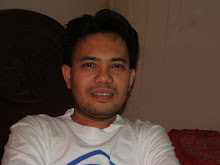
The Atlantic, January-February 2008
Text by Andrew Sullivan, Photos by Louie Palu
In his famous essay “A Hanging,” George Orwell wrote of witnessing an execution in British-run Burma:
It was about forty yards to the gallows. I watched the bare brown back of the prisoner marching in front of me … And once, in spite of the men who gripped him by each shoulder, he stepped slightly aside to avoid a puddle on the path. It is curious, but till that moment I had never realized what it means to destroy a healthy, conscious man.
It is the specificity of the image that resurrects the moral question. In the long and sometimes bitter debate over the Bush administration’s policies on detention and interrogation of prisoners in the war on terror, the abstractions are so familiar we have become almost numb to them. We hear the word Gitmo and it stands for a way of conducting a war, for an era that has indeed made the Geneva Conventions seem “quaint,” a time in which even torture has been euphemized into “enhanced interrogation techniques” or “aggressive questioning,” a moment in American history when even the attorney general refuses to call waterboarding a crime.
But Guantánamo Bay is also an actual place. Behind every abstract story of another hunger strike, there is a feeding tube; behind every media controversy about alleged abuse of the Koran, there is a Holy Book somewhere, suspended in a surgical mask. The photographs on these pages refer to a place, buildings, lives. They refer to prisoners and guards who experience rain and concrete, blood and saliva and fear. As Orwell also put it, “To see what is in front of one’s nose needs a constant struggle.”

A recreation area for noncompliant detainees at the Guantánamo Bay detention facility. According to the recently leaked Guantánamo Standard Operating Procedures manual from 2003, “Detainees will receive two 20-minute recreation periods a week.”


Leg restraints next to a desk in the detainee classroom in Camp Four, where the most-compliant detainees are housed. The U.S. government is holding some 340 “enemy combatants” at Guantánamo Bay. Fewer than 20 percent of Guantánamo inmates have been members of al-Qaeda, a National Journal study suggested. The same survey concluded that a high percentage, perhaps the majority, of inmates were not captured on any battlefield, but were handed over by Afghan warlords or Pakistanis in return for rewards. Of the nearly 800 detainees who have reportedly been housed at Guantánamo since January 2002, approximately 445 have been released or transferred.

A feeding tube of the type used on detainees who go on hunger strikes. The striker is restrained while the feeding tube is passed through his nose. Hunger strikes have recurred at the camp since it opened. According to The New York Times, the peak number of simultaneous hunger strikers was more than 130, in September 2005. The largest number of those restrained and force-fed was 15, in March 2006. In June 2006, three inmates who were on hunger strikes succeeded in hanging themselves.

A Koran is suspended by a surgical mask from the wall of a cell at Camp One. More than 1,600 Korans were issued to inmates between January 2002 and June 2005. The use of surgical masks to hold Korans enables inmates to keep the books off the floor, thus avoiding sacrilegious contamination. Alleged abuse of the Koran by guards and interrogators has led to several hunger strikes by prisoners. In June 2005, the U.S. Southern Command confirmed that five cases of Koran mistreatment had occurred over a period of two and a half years.

Detainee cells in Camp Six, the newest detention facility at Guantánamo. One detainee can be seen in the center lower cell. The 2003 manual spells out four levels of detainee access to the International Committee of the Red Cross: a. No Access: No contact of any kind with the ICRC. This includes the delivery of ICRC mail.
b. Restricted: ICRC is allowed to ask the detainee about health and welfare only. No prolonged questions.
c. Unrestricted: ICRC is allowed full access to talk to the detainee.
d. Visual: Access is restricted to visual inspection of the detainee’s condition. No form of communication is permitted. No delivery of ICRC mail.
A member of the U.S. military reflected in rainwater in a detainee recreation area in Camp One. An arrow gives the direction and distance (12,793 kilometers) to Mecca for Muslim detainees who wish to worship. A leaked logbook of the interrogation of Mohammed al-Qahtani, a high-value detainee, records the following techniques: he was interrogated for 18 to 20 hours a day for 48 of 54 days; he was doused with water and kept in a room air-conditioned to induce hypothermia; he was hooded and menaced by a dog; he was injected with fluids and forced to urinate on himself. All of these interrogation methods were personally approved by then–Defense Secretary Donald Rumsfeld.
